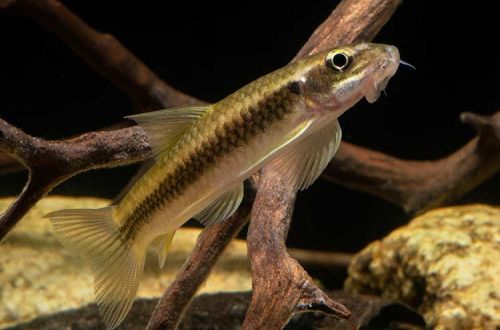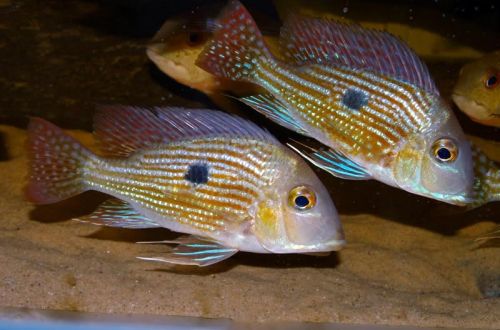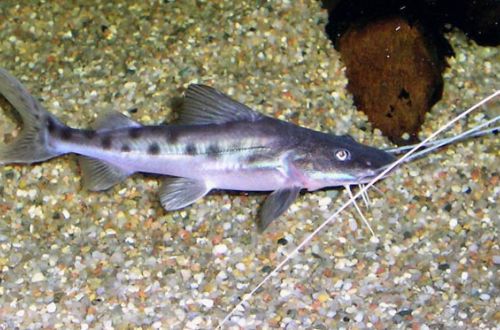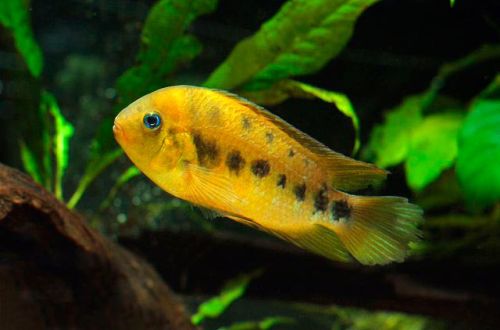
Cichlazoma yellow
Cryptocherus nanoluteus, Cryptocherus yellow or Cichlazoma yellow, scientific name Amatitlania nanolutea, belongs to the family Cichlidae (cichlids). Previously, before the reclassification, it was referred to as Cryptoheros nanoluteus. Bright beautiful fish. Considered easy to keep and breed, compatible with many other fish species. The only problem may be the behavior of males during spawning.

Contents
Habitat
It originates from Central America from the basin of the Guarúmo River, which flows through the territory of the province of Bocas del Toro, Panama. Fish are found throughout the course. Inhabits various biotopes: areas with fast currents and rocky substrates, as well as quiet backwaters in the lower reaches of the river with a silty bottom and an abundance of aquatic plants.
Brief information:
- The volume of the aquarium – from 80 liters.
- Temperature – 23-26°C
- Value pH — 5.0–7.5
- Water hardness – 10–26 dGH
- Substrate type – sandy or rocky
- Lighting – subdued
- Brackish water – no
- Water movement – light or moderate
- The size of the fish is about 6 cm.
- Food – any food
- Temperament – conditionally peaceful, males are territorial during spawning
- Content alone, in pairs or in a group
Description
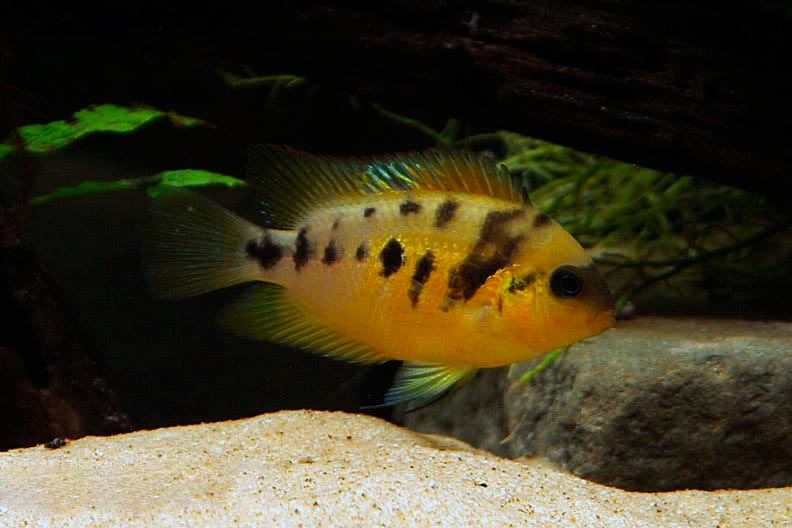
Adults reach a length of about 6 cm. Unlike females, males are somewhat larger and have pointed dorsal and anal fins. The coloration is yellow with black strokes stretching along the middle of the body. Fish often have blue eyes.
Food
Undemanding to the diet look. In the home aquarium, it will accept most popular foods designed for aquarium fish. A daily diet may look like this: dry flakes, granules combined with live or frozen brine shrimp, daphnia, small bloodworms.
Maintenance and care, arrangement of the aquarium
The optimal size of an aquarium for one or two starts from 80 liters. Not demanding on design, able to adapt to different environments. If breeding is planned, then it will be necessary to provide places for shelters in the form of caves, grottoes, crevices.
The wide natural habitat makes it possible to keep Cryptocherus both in soft slightly acidic water and in conditions of elevated carbonate hardness. The fish needs clean, unclouded water. Sudden temperature changes, rapid changes in the values of hydrochemical indicators and the accumulation of dangerous concentrations of nitrogen cycle products should not be allowed. To do this, the aquarium is equipped with the necessary equipment and regular maintenance is carried out, which includes at least a weekly replacement of part of the water with fresh and timely removal of organic waste (uneaten food residues, excrement, etc.)
Behavior and Compatibility
During the spawning period, they may show some aggression, which is explained by the desire to protect their offspring. Otherwise, it is a peaceful calm fish. It gets along well both with its relatives and with representatives of other species.
Breeding / breeding
With the onset of the mating season, the male and female form a temporary pair and occupy a site at the bottom of the aquarium around a shelter, such as a cave. It is worth remembering that if the group of yellow cichlases is large enough, then several pairs can form, and each will require its own site. With a lack of space between males, skirmishes will inevitably begin.
You can determine the approach of imminent spawning by color. During courtship, the fish become bright yellow. The female lays about 200 eggs. The incubation period lasts 3-4 days, after another week the fry that have appeared begin to swim freely. All this time, the female is in close proximity to the clutch, and the male “patrols” the territory, protecting his offspring.
Fish diseases
The main cause of diseases lies in the conditions of detention, if they go beyond the permissible range, then immunity suppression inevitably occurs and the fish becomes susceptible to various infections that are inevitably present in the environment. If the first suspicions arise that the fish is sick, the first step is to check the water parameters and the presence of dangerous concentrations of nitrogen cycle products. Restoration of normal/suitable conditions often promotes healing. However, in some cases, medical treatment is indispensable. Read more about symptoms and treatments in the Aquarium Fish Diseases section.



